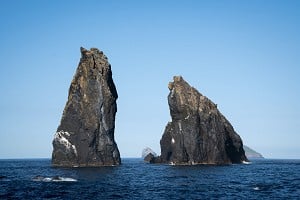
On the last Tuesday of January, Shetland's capital Lerwick goes a little bit mad during the Up Helly Aa fire festival. Locals boast that there'll be no postponement for the weather. This is a bold claim considering it's held in mid-winter at the same latitude as southern Greenland. But storms, sleet and snow have never yet stopped the people of Lerwick from having a massive fire procession, then burning their Viking galley and dancing until dawn. Up Helly Aa is more than a sub-arctic bonfire and booze-up. It's a superb spectacle, a celebration of Shetland history, and a demonstration of the islanders' skills and spirit. The festival lasts just one night, but it takes thousands of people 364 days to organise.
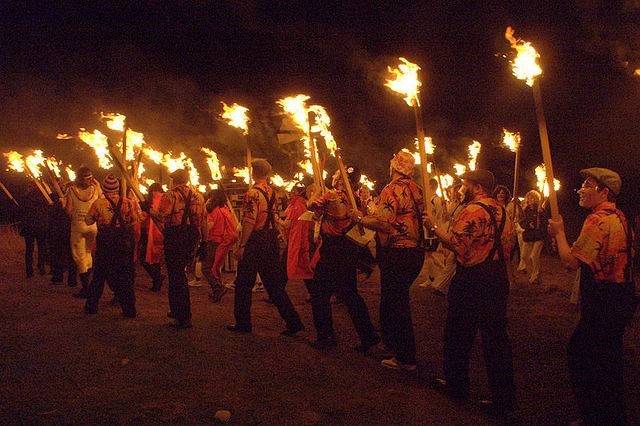
Even though a climbing trip to Shetland might not take quite as much effort, most people never go because of the perceived effort involved. However - if you're prepared to invest a little bit of time planning and organising a trip, climbing on Shetland is incredibly rewarding. The basic numbers are pretty attractive: over 800 routes on around 40 crags, with 13 different rock types to climb on. There is trad, sport and bouldering, as well as easily accessible single pitch stuff all the way to stomach-churningly terrifying & remote multipitch climbing.
Before getting into the nitty gritty of climbing on Shetland there are a few things to know before you arrive. When talking about the place, it's just Shetland, not "The Shetlands" or "The Shetland Islands". There are dozens of islands in the group and 22,000 inhabitants, but you won't see many folk about – everything about this place feels remote and different. Coming to Shetland will end up being about far more than the climbing – the landscape, the abrupt changes in the weather, the warmth of the islanders, the wildness of the islands and the unshakeable feeling that this is neither Scotland nor Scandinavia, but somewhere between those two worlds.
Shetland also includes Fair Isle and Foula, the latter being home to the second biggest sea cliff in Britain, and a step up in commitment and adventure. Some would call climbing on Shetland esoteric. However, as Steve Clark (aka Offwidth) once sagely intoned to a packed room of moorland grit enthusiasts "It's not esoteric, it's effort!" – and he was right. Despite three weeks on Shetland exploring and climbing I know I'll be back there again in the next couple of years.
History
Although it's certain that some cliffs were scaled by local fishermen and bird botherers in the dim and distant past, the history of rock climbing starts relatively recently. Wilson Moir visited Eshaness in 1988 and did a couple of obvious lines (and he may not have been the first), but mainly it was down to the legendary Andy Long to start the organised development of the islands, and as time has gone by he has put his name on many routes on many of the best crags. Andy's first recorded route on Shetland was also in 1988, and his new routing has continued to the present day, ably supported by Al & Paul Whitworth, Ross Jones and a cast of thousands from the Shetland Climbing Club. Other luminaries include Dave Turnbull & Crag Jones who opened up the awesome cliffs on Foula, with their routes on Nebbifield taking pride of place. Much of the development has been the responsibility of the Shetland Climbing Club. Although their membership is small, it more than makes up for that in terms of the effort it has put in over the last 17 years or so to get the climbing scene up and running. The history of climbing on these islands is on the Shetland Climbing website and it's well worth a read to give a flavour of those who have gone before.
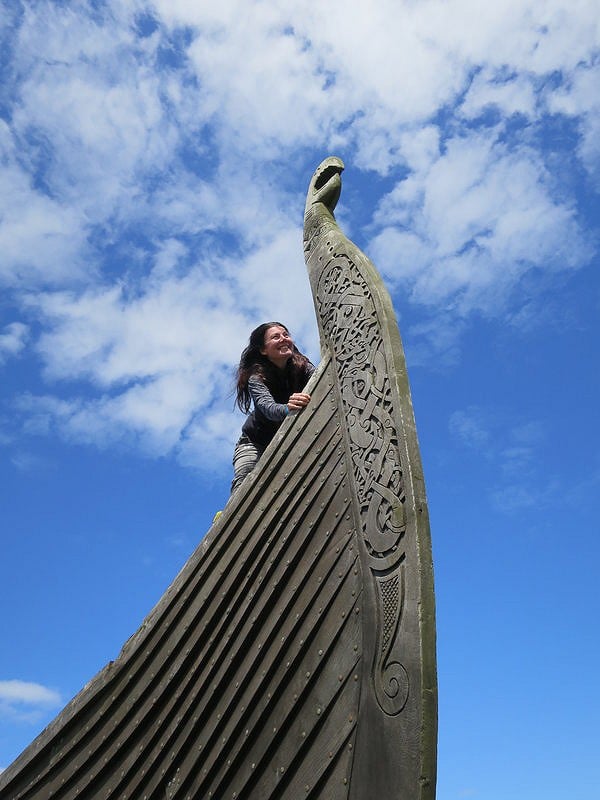
Areas
Most of the climbing is on Northmavine and what's called the Mainland. There are crags on a number of the other islands dotted around the coast, most of which are relatively straightforward to get to. I found that it was best to choose an area and stay there for a while before moving on. If you only have a short time, using Eshaness as a base and exploring from there will be a brilliant introduction to Shetland climbing. The guide lays out the options and the crags in great detail.
My Shetland Top Five
Groove of Grandeur (Tingon) HS (picture)
When I first saw this route I thought the guide was wrong and it was an E3. It's incredible that a route of this grade goes up such a blank looking line. It was a startling experience and worth doing twice.
Foy Corner (VS 4c) (Eshaness) VS
The VS climber's Cenotaph Corner. This is a breathtaking 48m of three dimensional climbing up a monstrous, black corner system that seemed to go on forever. Being on this route was like climbing up the inside of some H.R.Geiger inspired Gothic cathedral – huge, imposing and requiring every single technique you can think of, including a bit of squirming. It's probably only VS if you can climb HVS. Brilliant.
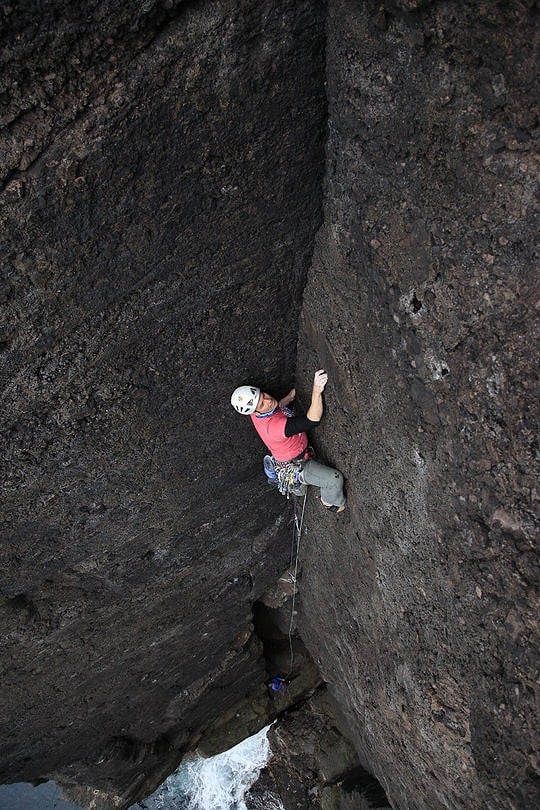
Spoilt for Choice (Tingon) HVS
Another amazing route which looks like death on a stick. You climb using perfect pockets and unbelievable friction whilst only being able to place just enough gear to stop you calling for toprope rescue. This is as good as HVS wall climbing gets.
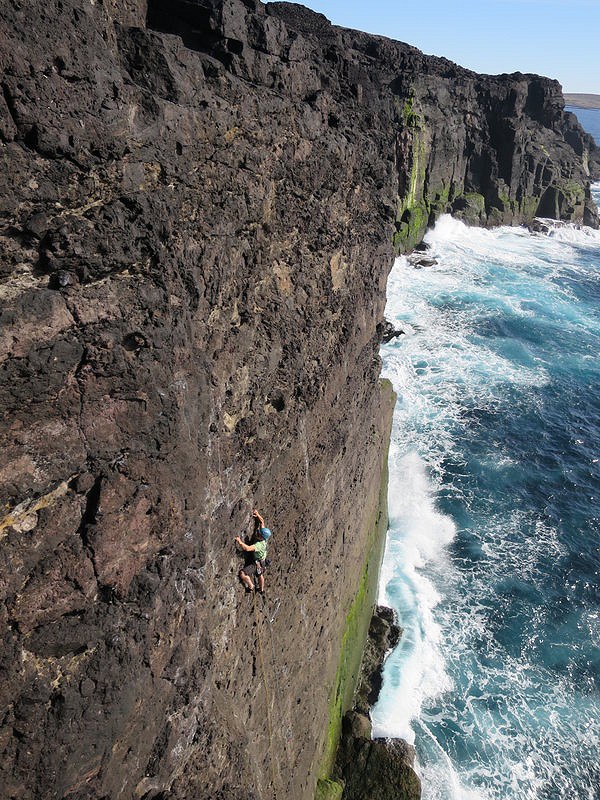
Perfect Groove (VS 4c) (Eshaness) HVS
Dave Turnbull's finest hour – perfect by name and perfect by nature. From the cliffs opposite you would never believe that anything less than E3 breaches that huge wall. Every move is a complete pleasure, and it carries on for a full 45m.
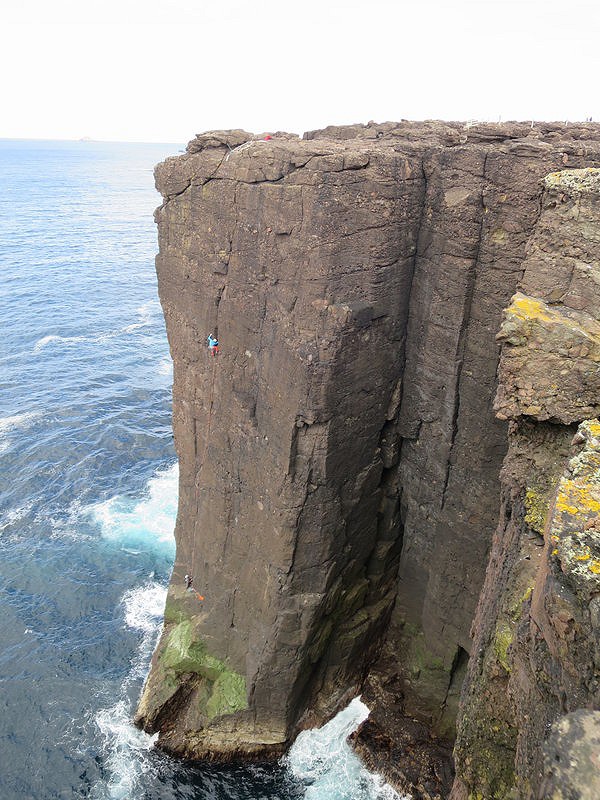
The Augurist (E1 5a) (The Faither) E1
One of the more remote and adventurous routes on Shetland. Finding the abseil takes some thought and planning, and once you're on your way down that rope you hope you're in the right place because there's no way out if you're wrong. Once you're on the route the gear is spaced out, but the holds just keep giving. The rock is beautifully textured and flecked with a mysterious green in the higher reaches of this huge single pitch.
In Search of Lost Time (E1 5a) (Ness of Sound) E1
It's a long and fairly lonely lead, but if you're cool on your feet you'll love this route. The other routes on the wall (all HVS – E2) are similar in style and the crag makes an ideal venue for your first or last day on Shetland as it's 10 minutes from the ferry terminal.
Grimsetter Crack (Muckle Hell) E1
A striking and eye-catching line up a black wall that would be ten times better if it were ten times longer. It leaves you wanting more, which is exactly what you want from a route.
This Timeless Moment (E2 5b) (Otter's Head) E2
Another huge pitch (50m) that follows an obvious line up the front of North Head. Corners, cracks and overhangs all contribute to an increasing sense of exposure and exhilaration as you get higher, while the spray from the incoming tide nips at your heels.
Sirens of Calder (E2 5b) (Eshaness) E2
"There's no way this is going to be E2" will be your first thought on seeing this big, blank wall. That's also what you'll think as you look up at it from the wave washed platform at the base of the route. You'll not be surprised to learn it's another 45m+ pitch. The gear is adequate enough to encourage you to keep moving, but is also adequate enough to keep you on your guard for the whole route. It's a very involving experience that is never too hard, but it keeps you guessing all the way.
Last Tango in Unst (E2 5c) (Skaw) E2
A tough experience up a well protected but steep crack on the most northerly crag in the UK. Excellent and sustained climbing that's more like some gnarly Yosemite testpiece than a classic route, on a rarely visited crag at the edge of the British Isles.
The Mariner (E3 5c) (Muckle Roe) E3
Another huge pitch, this time in a remote setting the best part of an hour from the road. This is an intricate line that relies on your route finding abilities more than most routes on Shetland, and is a route that never really lets up. Once you start you'd better hope you can get to the top because it's the only way out of the aptly named Big Geo of Stromness.
The Nose (Foula) E4++
I haven't done this route, because I'm frightened by it: 12 increasingly difficult pitches of intense, sometimes insecure climbing in an inhospitable and truly remote place with no chance of rescue should something go pear shaped. The 950ft abseil to reach the base of the cliff is probably as epic as the route itself. The report of the one known repeat by Andy Reeve and Dave Brown is well worth reading, especially the part where a seemingly solid flake the size of a fridge comes off in the second's hands. Let me know how you get on.
Out of the 40-50 routes I did I can't think of any that were less than good. This list is a basic introduction, but there are many more great routes that I didn't do that you certainly should.
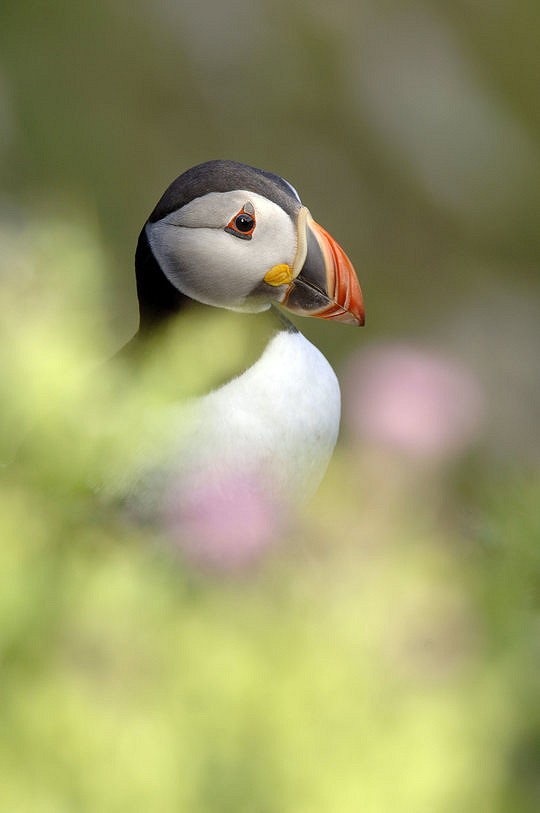
Logistics
When to Go
As a rule, April through September is best, but it's possible that in April you may be at the mercy of a late start to the spring. May and June are the best months, and they have the added benefit of long days. The simmer dim (the prolonged dusk between sunset and sunrise) can provide enough light to read by if the sky is clear and it lends an ethereal quality to the land and sea. Bear in mind that Shetland has had baking hot days in April and driving snow in July. Shetland is slap bang between the North Sea and the Atlantic - as a result it gets plenty of weather and is at the mercy of marauding atmospheric systems so be prepared for everything, and more. Whatever direction the wind is blowing in there'll be at least one crag that is sheltered.
How to Get There
Choices, choices. As with many things in life, it all depends. It depends on how much time and money you have, how many of you there are and on what level of convenience you want. There's no best fit, but if I lay the options out then you'll come up with a plan. You can fly to Lerwick from all major airports via Glasgow and Edinburgh. You can also get there by two different ferry routes. There's the overnight (12hr) crossing from Aberdeen on Northlink Ferries, or island hopping from Scrabster to Stromness (Orkney) and then from Kirkwall (Orkney) and on to Lerwick. The costs are broadly similar for both of these options, but can vary with the season and how far in advance you book. If you're going by road, there are options to climb on the way there and back again, and the sea cliffs around Aberdeen and Caithness are certainly worth a few days of anyone's time, and climbing on Orkney needs no introduction.
Public Transport
There is a decent bus service and the inter-island ferries are excellent, but if you have no transport of your own I'd hire a car or a motorhome when you get there.
Accommodation Advertise here
No Premier Listings found in this area
Again, it depends. Those with vans who take the ferry won't have any issues with this for obvious reasons. If you're in a car then there are a few campsites, and wild camping is allowed with the application of common sense. There are many B&Bs, a few hostels and hotels and a smattering of AirBnB options too. There is some unique accommodation on Shetland – Camping Böds. These are old fishermen's houses which have been restored to provide simple self catering accommodation. They are £10 or £12 per person per night depending on facilities, but as a minimum they have beds, toilets, a peat fire, cooking facilities and running water; some have hot water and showers. They are excellent and affordable places to stay and are a good respite from the rigours of van living or camping.
Guidebook
There is only one – the excellent Shetland Climbing by local bon vivant and all round nice guy Al Whitworth.
Instructor/Guides Advertise here
No Premier Listings found in this area
Outdoor Shops Advertise here
No Premier Listings found in this area
There is nowhere to buy climbing gear on Shetland, although there are a couple of outdoor shops in Lerwick.
Food and Supplies
As far as food goes, Tesco and the Co-op have a presence on the islands, and there are many locally run community stores that stock the essentials. There are a few pubs on Shetland, but most aren't really that good. The Lounge Bar in Lerwick near the Tourist Information has live music every week, and the Mid Brae Inn at Brae is rough and ready but welcoming and you'll probably have to have a friendly arm wrestle with one of the locals at some point in the evening. There's a distillery in the north of the islands which brews gin and whisky and is worth a visit. The best coffee shop (Fjara) on Shetland is opposite Tesco in Lerwick. There is a campsite and cafe near Eshaness at Breawick which is a friendly haven in the wilderness. The food is great, and you can get a shower even if you're not staying there. Frankie's Fish & Chips in Brae is rightly packed out most nights and is worth a visit or two. The Shetland Climbing Club are a super friendly bunch of people who made us feel incredibly welcome, and they were an excellent source of helpful information, cheese and whisky.
Wet weather options
Luckily, every reasonably sized settlement has a leisure centre which means that you're never more than 30 minutes from a swim, steam and/or sauna. Crazy golf, fitness studios and weights rooms are sometimes available too. They're also great for cheeky showers to wash away the grime and for a bit of warmth and dry when the weather gets a bit challenging. Lerwick library has internet and very helpful staff who will go the extra mile to help you out. There are plenty of museums and other cultural places to hang out in, as well as a cinema and performance space at Mareel in Lerwick.
Nesting restrictions
This can sometimes be a complex business but on Shetland it's not. None of the developed crags are on bird-ridden cliffs so this is one thing that you can comfortably and happily remove from your calculations. Obviously there are nesting birds and sometimes they stray onto climbing cliffs, but the bottom line is that it isn't an issue. However, that being said, if you go way out west to the remote island of Foula, then you can expect to face your fair share of bird related nonsense. If the monstrous cliffs of Foula are in your sights then wait until July.
What else is there apart from climbing?
Shetland is a geologist's wet dream, even if you only have an amateur climber's interest. Volcanic Andesite, Serpentite, Pyroclastic Breccia and Ignimbrite are just some of the rocks you can get your hands on while you're up north. The spectacular Dore Holm just off the coast of Northmavine is as wonderful a piece of geology as you'll see anywhere, especially in a storm. There's a wild and spectacular coastline to explore that hides some incredibly remote and spectacular beaches and coves. The Lang Ayre on Northmavine is one of the most impressive beaches in Britain that you won't have heard of. If you're brave enough to try sea kayaking, then you're in for a treat – but you probably need to know what you're doing before you get tangled up in those tides and currents.
Flora & fauna
Shetland's wildlife is a source of interest and entertainment, and it's worth taking your binoculars just in case something unexpected crops up. One evening we were watching rowers in the sheltered bay of St Ninian's Isle when we were startled to see a pod of killer whales surface not far from the rowers. Obviously we weren't as startled as the rowers who promptly earned their personal bests getting back to shore. Away from the beach you're likely to see a lot of birds and butterflies, orchids and unusual plants (if you know where to look), including Edmonstons's Chickweed which is the rarest plant in Great Britain and can only be found on Shetland. As far as the dreaded midge goes it's nearly always too windy for them so they'll (probably) have almost no effect on your time here.
Grades, cliffs, tides and all that shizzle
Interestingly, there is very little above E3. That's not because there's no hard climbing, it just hasn't been done yet. A few exploratory trips by Messrs Turnbull, Bransby and others have left a smattering of hard lines, but the vast majority of routes lie between VDiff and E3, which is extremely good news for you, my friend. There are many opportunities to do new routes and climb on new cliffs if the mood takes you. The guide does a pretty good job of getting you to all the crags. Many are very easily accessible via a friendly walk or short abseil. Some of the crags (e.g. The Faither and Eshaness) require some effort in terms of setting up tricky abseils and a willingness to endure hanging belays above churning seas. Speaking of which, the tides, the sea state and atmospheric conditions are critical factors when climbing on Shetland, so be prepared with all the relevant knowledge. The crags are spread all around Shetland, but the majority of them are on the larger islands (Northmavine and various parts of the Mainland) which means that you'll have relatively little driving once on Shetland.
Conclusion
Some say that there's something special about the light in Cornwall and that's probably true, but there are many more things that are special about Shetland. It's hard to pin it down to one thing or the other, but what's left for me after three weeks on Shetland is a lasting feeling of tranquillity, endless wide open spaces, massive skies, adventure and a warm welcome at every turn.
- REVIEW: Kinder Scout, The People's Mountain 26 Mar, 2019
- DESTINATION GUIDE: Donegal 21 Aug, 2018
- REVIEW: Shetland Climbing Guide by Al Whitworth 23 Nov, 2016
- The Climbers' Club Lundy Guidebook 4 Aug, 2008
- Lakes Festival of Climbing: Under Pressure (1027mb) and Wide Hel 22 Jun, 2008

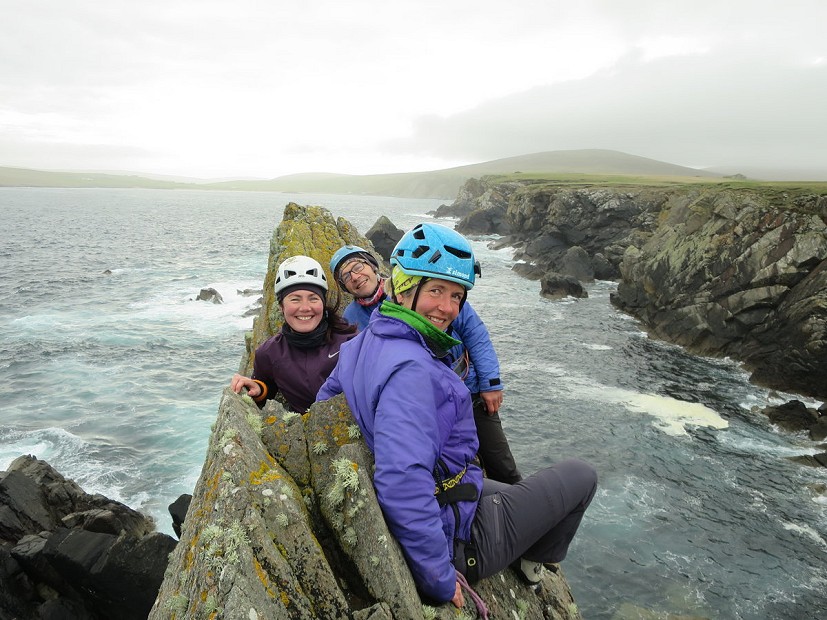
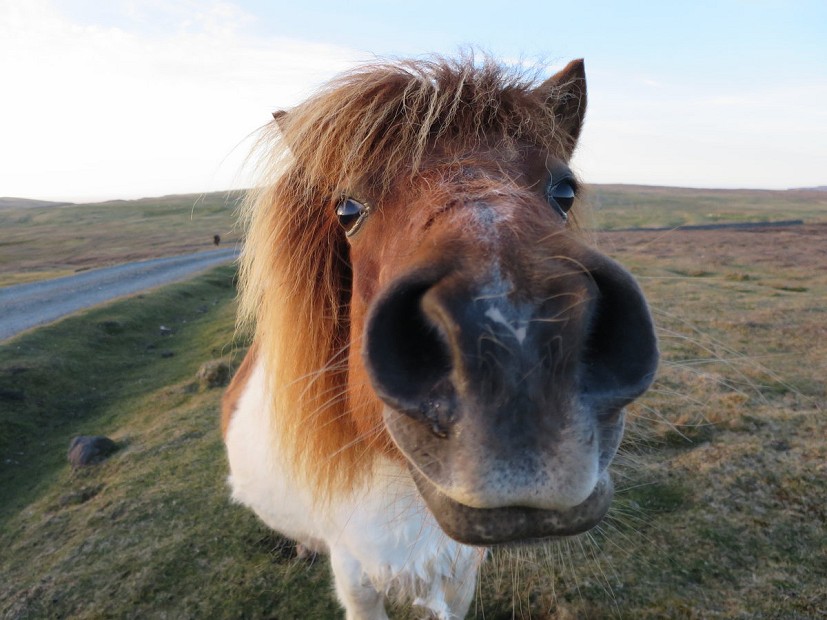
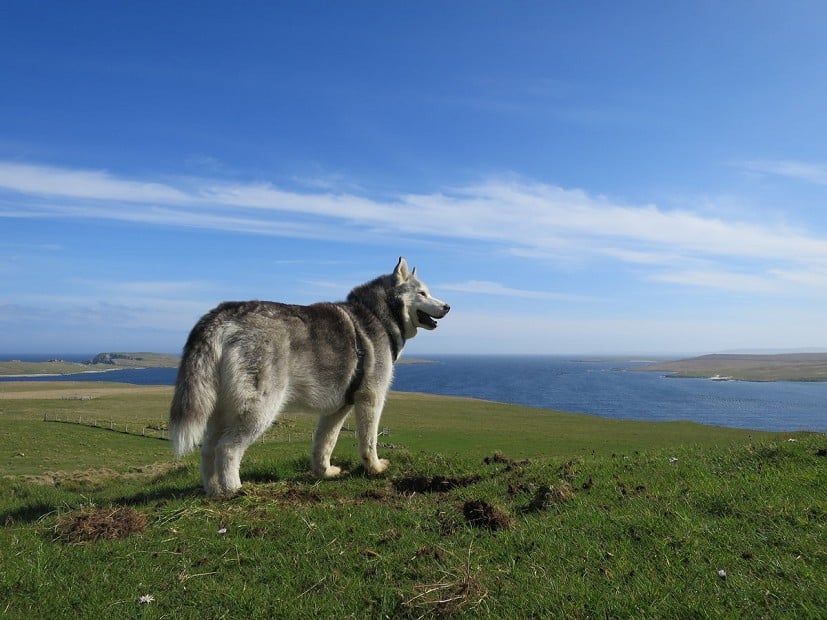
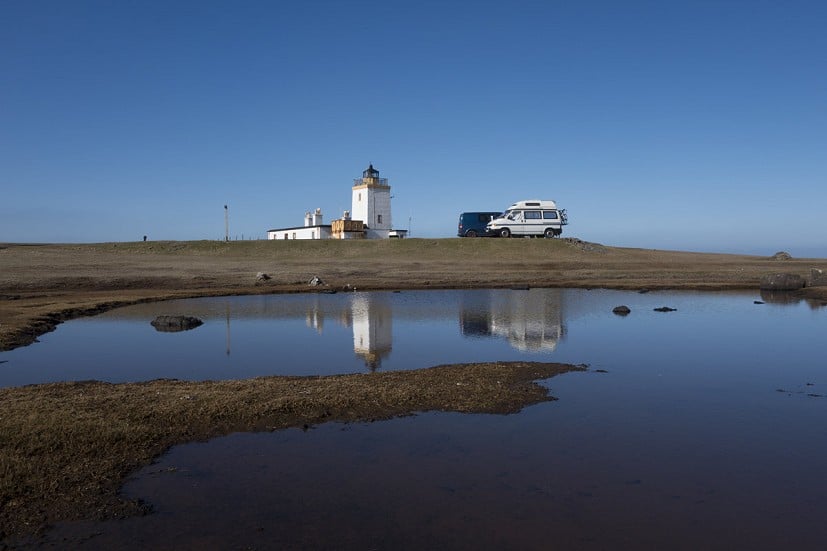
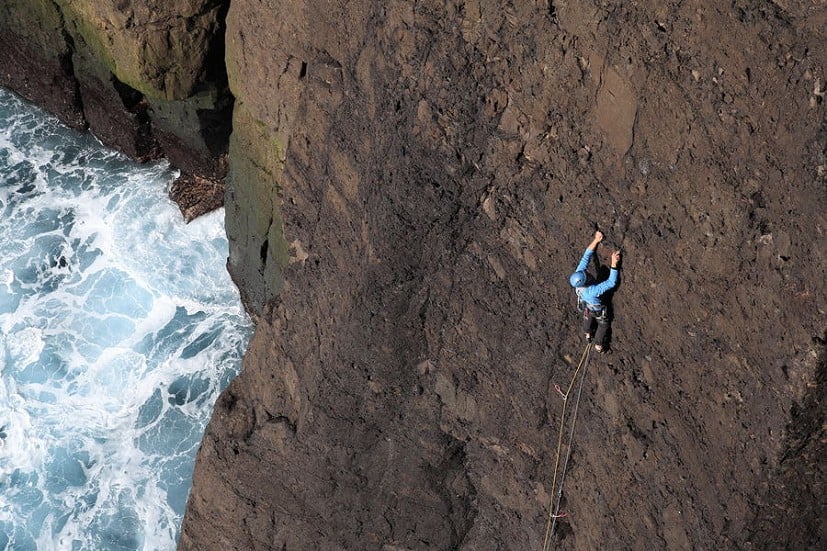
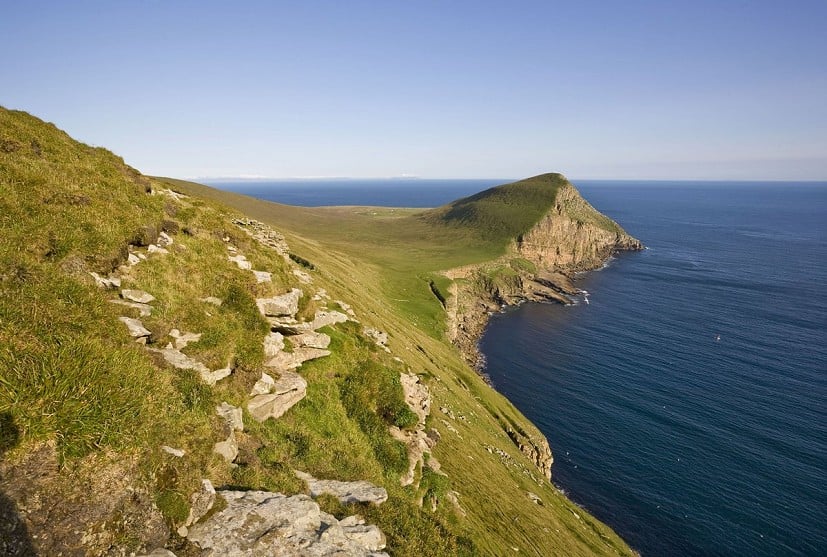
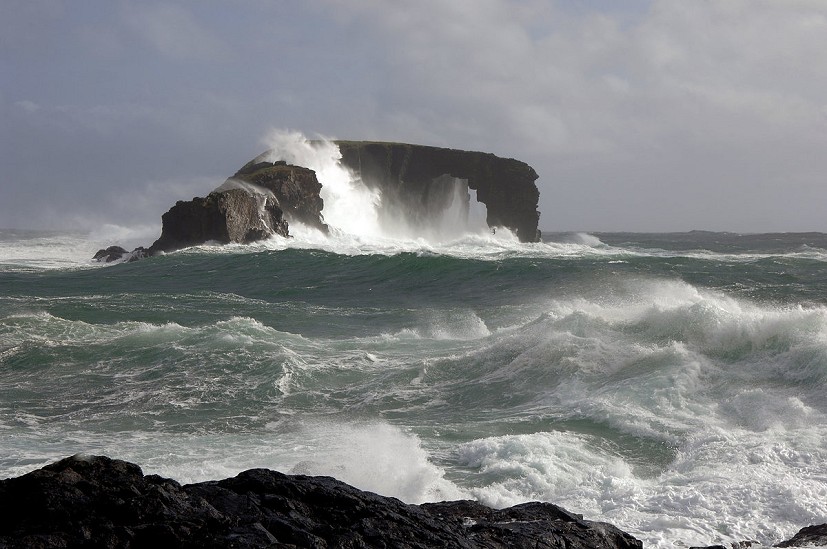
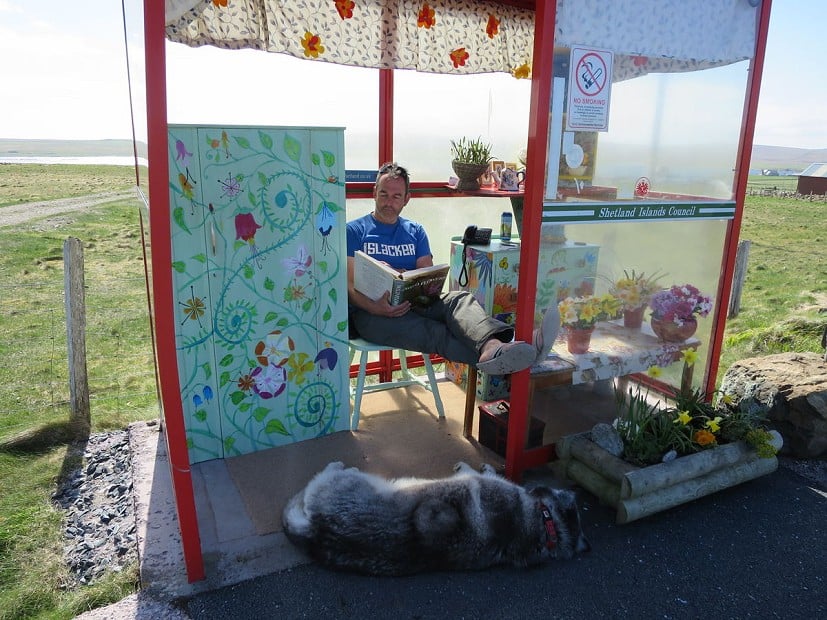
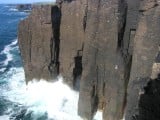
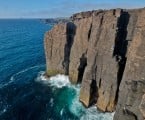
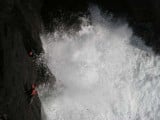


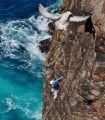



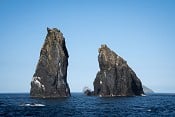
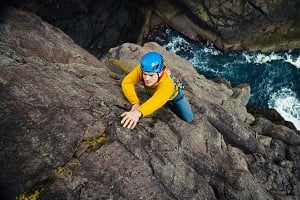
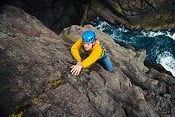
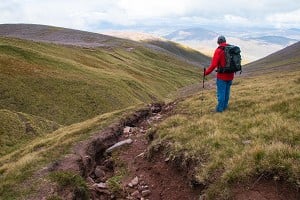
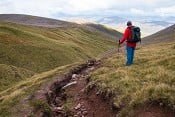



Comments